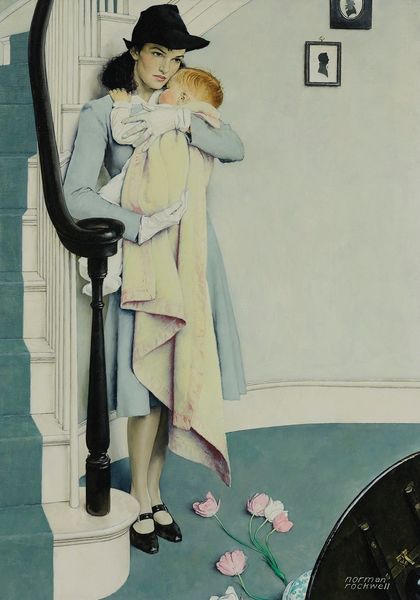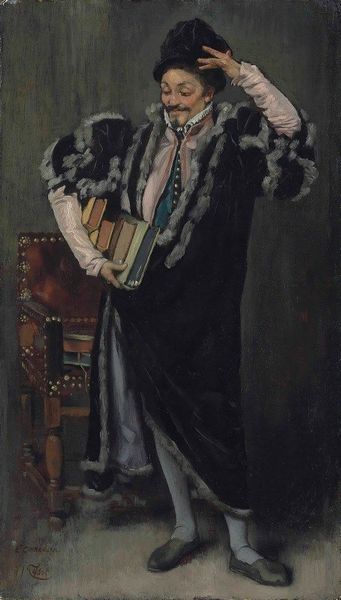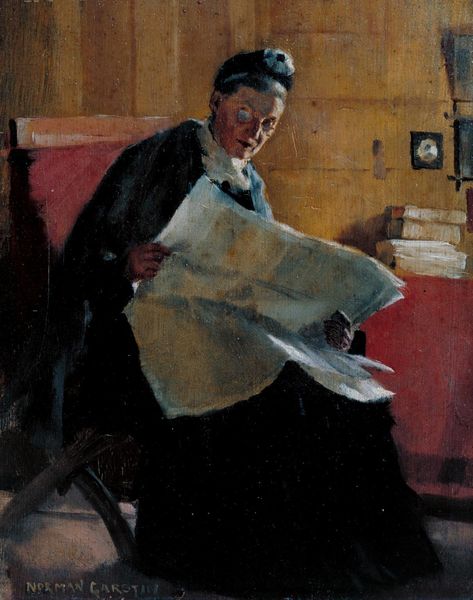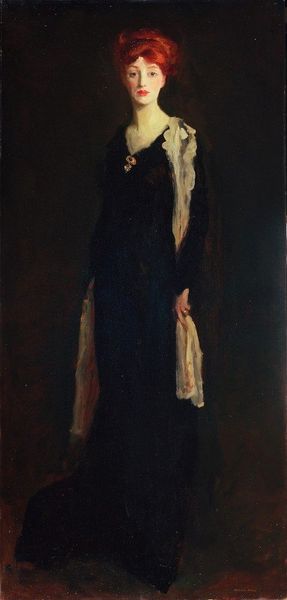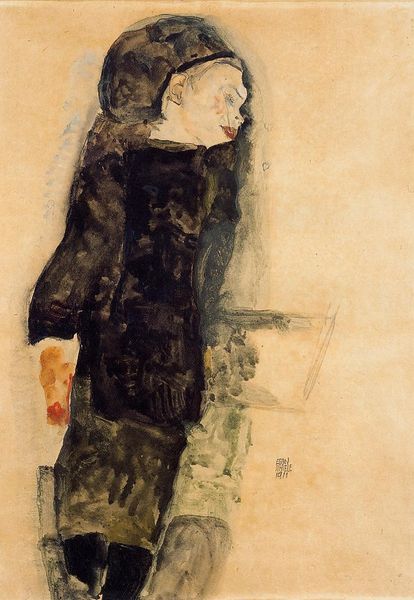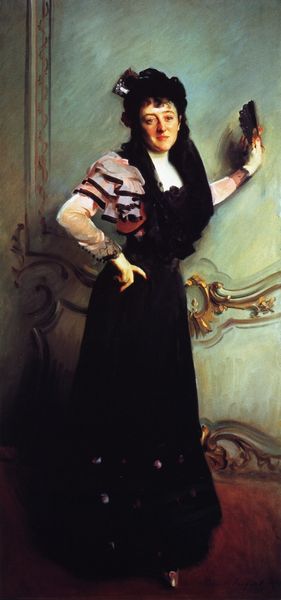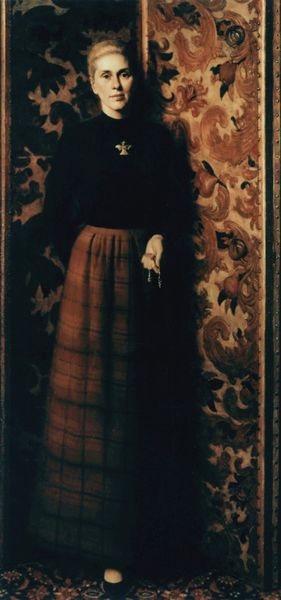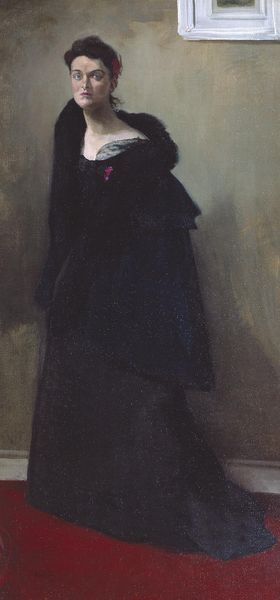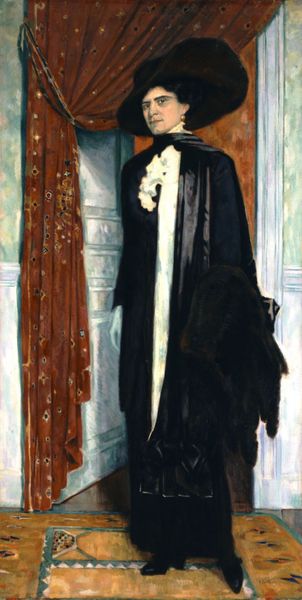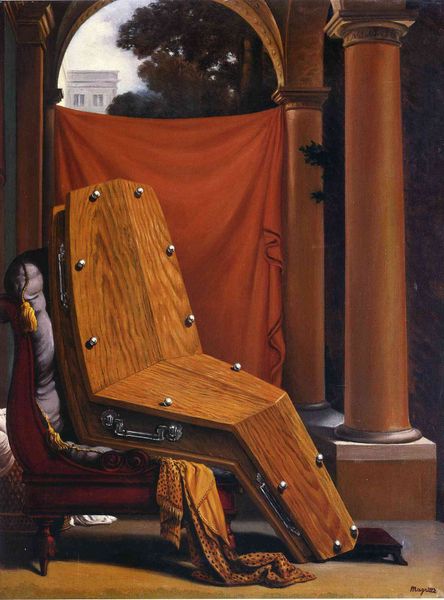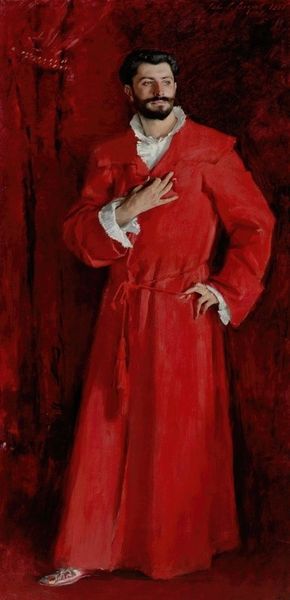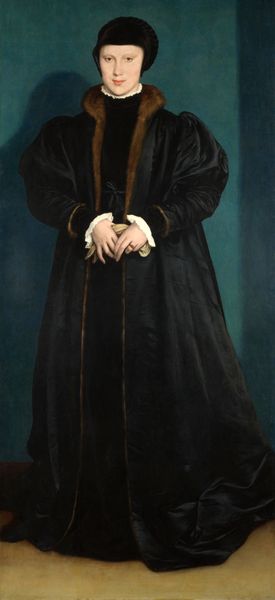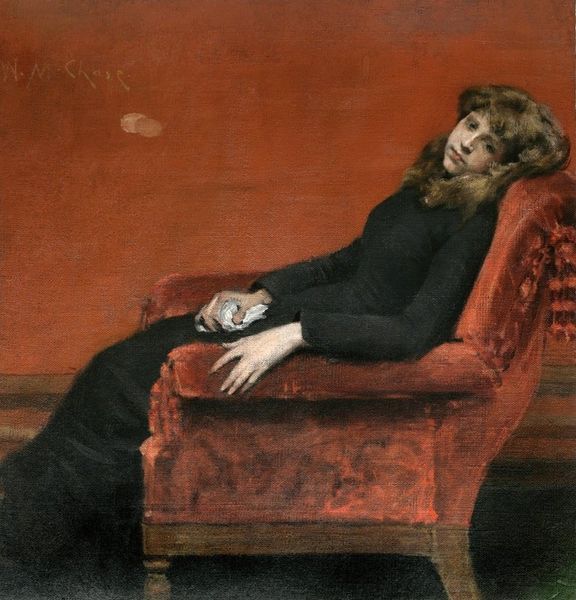
Dimensions: support: 2026 x 1194 mm
Copyright: CC-BY-NC-ND 4.0 DEED, Photo: Tate
Curator: Here we have an imposing 17th-century portrait, likely British School, depicting Sir Thomas Pope, later the 3rd Earl of Downe. Editor: The scale is striking, almost life-size. The somber black of his attire creates a stark contrast with the red velvet and lace details. Curator: Indeed. It's crucial to understand the social hierarchy of the time. The Earl's clothing signifies his wealth and status, while the sword subtly suggests his power and readiness to defend his position. Editor: The details of the lace and embroidery, though, draw my eye. There's a certain tension in the way the artist captures the sheen of silk versus the rougher texture of the carpet beneath his feet. Curator: Absolutely. Consider the historical context. This portrait serves as a visual representation of class and gender roles in 17th-century England, and also the historical legacy of the family it represents. Editor: Examining those textures heightens my experience of the painting's realism, making it more engaging. Curator: These artworks remind us of the ongoing need to reflect on the complexities of power and representation across history. Editor: A closer look really does reveal that the artist's use of light and shadow makes the Earl’s figure leap from the canvas.
Comments
tate 6 months ago
⋮
http://www.tate.org.uk/art/artworks/british-school-17th-century-portrait-of-sir-thomas-pope-later-3rd-earl-of-downe-t03029
Join the conversation
Join millions of artists and users on Artera today and experience the ultimate creative platform.
tate 6 months ago
⋮
Sir Thomas Pope of Wroxton Abbey, Oxfordshire became the 3rd Earl of Downe late in life, in 1660. This painting, however, was probably made in the mid-1630s. Sir Thomas is wearing clothes that would have been fashionable at that time, although the Jacobean 'curtains-and-carpet' formula of this portrait would by then have been rather old fashioned. Gallery label, September 2004
